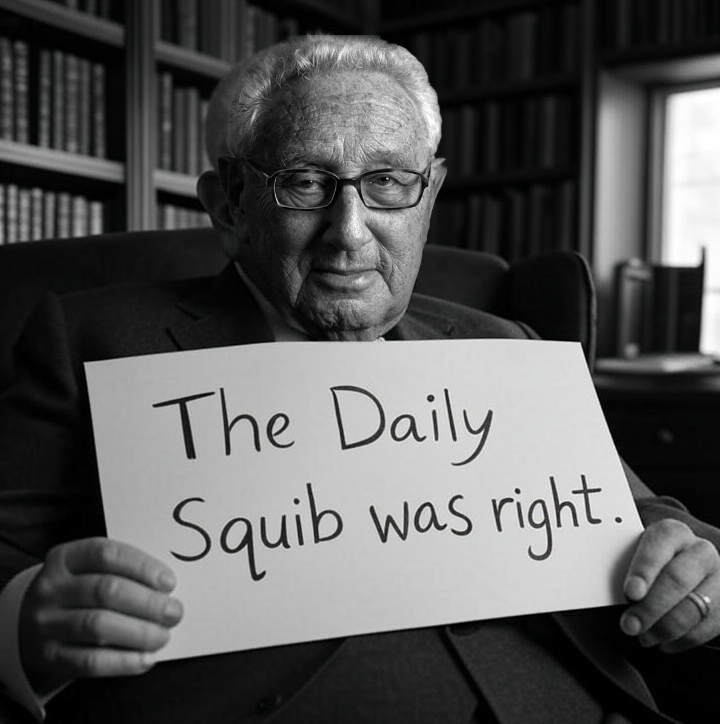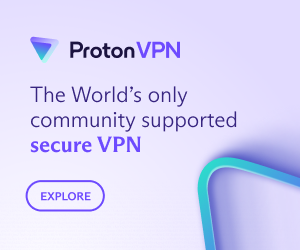Spending on search engine optimization is forecast to reach around $80 billion by 2020 in the US alone, a figure that was slightly more than $11 billion a decade ago.
The world of SEO has unquestionably come a long way in that time, including notable strides in the last couple of years. Google and Bing have continuously revamped their algorithms and incorporated new technologies like artificial intelligence to provide users with more accurate and relevant results in line with a person’s search intent.
Picture this: it’s reported that Google made more than 3,200 changes to its core search engine algorithm in 2018 alone, which averages out to approximately 9 updates every day!
Between keeping up with Google updates, finding the right keywords, crafting effective content and staying abreast of industry best practices, SEO can feel overwhelming and sometimes impossible.
In such a precarious industry, mistakes can happen especially when you’re starting out. Even the best of the industry can make harebrained SEO errors. That’s why I put together this list of nine epic mistakes I made while trying to get my feet wet in search engine optimization.
Sometimes the best way to forge forward is to take a step back and learn from our mistakes.
Mistake #1. Thinking Quantity Over Quality of Links
Link-building is the bread and butter of SEO. It’s easily one of the most effective ways to create more exposure and better ranking for your landing pages or websites. After all, links are a ranking factor that’s dear to Google and other search engines.
As engaging as your content might be, it will deliver little to no value to your SEO efforts if you don’t gain relevant links. However, not all links are carved out of the same stone.
When I started out, most people argued that the more links, the better the ranking. There wasn’t much consideration for the quality of the links. I mistakenly subscribed to this school of thought at first back in 2006. Well, from the common sense point of view, it looked like a sure thing.
Big mistake.
The reality of the matter is that a few links from big names make a much bigger difference than a lot of links from low authority sites.
What makes for a quality link in the first place?
Of course, it should come from a high-authority and reputable site, blog, news website, etc.
If you want to rank above the fold in organic search, however, you need to understand that each link building campaign is unique. What might be a surefire link for a finance website may not do much for a fashion blog.
Similarly, you cannot build links for an e-commerce website with the same campaign you’d leverage for a plumbing service. So, the definition of a quality link may differ depending on the niche and nature of the website you’re trying to build links for.
Just like SEO itself, link building is not a one and done strategy. It’s a long-term process.
Some links might naturally lose traction with time, while others might disappear altogether.
This makes fresh links a valuable currency.
As a rule of thumb, you should update and refresh your links alongside old content at least once a year. At the very least, make sure that no link in your content goes to a 404 error page.
Mistake #2. Not Using Tools to Judge the Strength of a Domain
Linking building is more of a PR push than a technical strategy. It often boils down to finding and getting links from high-authority domains. In fact, obtaining links from low-quality domains is one of the 17+ reasons companies fail at SEO.
Knowing which site is authoritative and trustworthy is half the battle, and often the hardest part. That’s why this is an area where most amateur SEO managers make mistakes, and I wasn’t any different.
Ten years ago you had to “trust” a site based on the looks, frequency of posts, and whatnot. But nowadays there are robust tools that automatically do this for you.
For example, I use both Moz and Ahrefs to judge what publishers I should engage with. Moz, for one, provides me with a spam score, domain authority and other critical metrics.
I use Ahrefs for estimated traffic data, to check what a domain is ranking for and its overall authority. These metrics help me sift through several domains and find one that will deliver the most ranking outcome to my targeted content before reaching out to their editors in hopes they accept guest posts.
The cliché that don’t judge a book by its cover has never been truer in the world of search. Instead of going with your guts, use these highly defined tools to make your job easier and add substance to your link building/SEO campaigns.
Mistake #3. Not Using Tools to Check for Traffic
The amount of traffic a site gets is often the measure of success of an SEO campaign. In the past, I didn’t check the quantity and quality of traffic the domains get.
Luckily, the same tools give you traffic estimates. That’s right; tools like MOZ and Ahrefs tell you more than the site’s authority and rating. Overall metrics that MOZ and Ahrefs deliver (Domain Rating or Domain Authority) or can be messed with via getting lots of backlinks to your website, which can end up perpetuating black hat marketing.
It is not uncommon for a site to have a DR/DA of 63 and only get 300 monthly organic visits. So use AHREFS to see organic visit estimates, traffic value, clicks and much more.
Remember taking a closer look at a website’s traffic can open doors into the key insights that enable you to learn the behavior and quality of a domain. When you get right down to it, more organic traffic translates into more conversions, increased brand awareness, stronger customer loyalty, and a bigger audience.
Besides MOZ and Ahrefs, free analytics tools like Google Analytics or Mixpanel can help you learn and visualize/ make sense of traffic data for sites that you want to get backlinks from.
At the end of the day, you want to leverage these tools to help you get backlinks from websites with lots of traffic, which is great for SEO. How so?
First off, traffic quantity says a lot about the site strength. Generally, the more traffic a site gets, the stronger and more relevant it is. And because you want to replicate this traffic, it is crucial that you obtain backlinks from high-traffic domains.
Backlinks from highly trafficked sites can also help build trust and credibility for your brand and website too. After all, no credible company wants to associate itself with an ill-repute site.
Mistake #4. Not Dedicating Enough Time to Engage With Other Blog Owners
When I started with SEO, it felt like I was a lone wolf.
The first mistake I made was thinking that I could do it on my own. I didn’t dedicate enough time to mingle, discuss, share and generally engage with other like-minded blog owners and site operators.
As you might already know, exposure and backlinks continue to be king in the world of SEO. But it’s hard to get backlinks. You email 100 people and at best 20 say yes, 40 ask for money for links (don’t do it) and the rest ignore you.
The idea is clear – it takes time to actually build relationships with other blog owners. A LOT of time. But it’s worth it at the end.
“Outreach, outreach, outreach” should be your professional and personal mantra when it comes to link and reputation building.
Want to take your blogger outreach efforts to the next level? Rejection can be hard, but you need to keep trying. The next sensible thing is to make sure that you offer value. What are you bringing to the table for other popular bloggers?
Follow your potential blog owners on Facebook, Instagram, Twitter, Reddit, Pinterest … the whole social media shebang! This way, it is easy to establish rapport and open communication channels.
Once you have cozied up to your potential influencers, invite them to your inbox, and make sure that you mention them in your blogs, social media posts, etc. It’s all about making your relationship based on value right from the beginning.
Mistake #5. Writing Short Articles
Content is a core part of search engine optimization. You have to produce a ton of link-worthy, fresh content. BUT how long should you make your blog posts, articles or landing page content?
There used to be a time not too long ago when many SEO managers believed that publishing hundreds of 500-word articles would do the trick when it comes to ranking. That didn’t work well back then and it doesn’t now.
Let’s get one thing straight: word count matters only if the content is good. It doesn’t matter if it’s 200 words or 5000 words long, an article will not rank if the quality of the content is poor.
But the article length is important. Why?
Articles between 3000 and 10,000 words in length get the most social shares, as per a MOZ study. More importantly, long-form articles get more organic clicks and a higher search ranking.
Content length influence SEO conversion. A study conducted by MECLABS Institute discovered that long-form articles deliver 50 percent more conversions than short ones.
It helps you gain more authority and build trust online. When you write articles longer than 2000 words, you are perceived as more authoritative in your niche or industry. Smart and savvy readers appreciate comprehensive content that plunges deep into the topic and audience paint points. In other words, the reader won’t have to jump to several different sites to get the same info.
What’s the ideal length of a post?
According to Backlinko, 1890 words seems to be the sweet spot. Another study by SerpIQ found that 2450 words to be the ideal word count for a rank-worthy article.
At the very bottom, Google deems any post shorter than 200 words as thin content.
Mistake #6. Not Optimizing Articles for Technical SEO
When I began doing SEO, it used to be that you publish an article and that’s it. That’s what pretty much everyone did. Today, content is not simply enough — you have to look under the hood, too.
Google looks at a lot of metrics these days, including article slug, title, first paragraph, meta description, and meta tags to determine what an article is about (check out this technical SEO guide to learn the drill). So you may have a great article and lots of backlinks and still not rank highly because your technical SEO is garbage.
Technical SEO has a lot to do with the architecture of your website. How it’s wired. If your site doesn’t have a robust backbone, everything else including your content will fall right apart.
Start with site speed. Every moment it takes your website to load is precious. In fact, Google says sites that load longer than 10 seconds experience increase in bounce rates by around 123 percent.
Your site should ideally load in less than 3 seconds. If it takes longer, you can say adieu to 53 percent of visitors, according to MachMetrics. Compress images, use CDN, reduce the use of scripts, and optimize for browser caching to speed up your site.
Think mobile first. Google’s Mobile-first Index is already in place, and mobile-friendliness is now a ranking factor.
Use canonical URLs. this is a smart move if you want to limit internal errors and avoid content duplication.
You should also use language tags, create an XML Sitemap, install an SSL certificate and leverage Google AMP to stay on top of your technical SEO.
Mistake #7. Trying to Rank for the Wrong Keywords
In a broader sense, there are buy-oriented keywords and educational keywords. The two buckets are not created equal.
As you might have already inferred, buy-oriented keywords (sometimes called buyer or commercial keywords) are phrases that users enter in search when they are looking for a specific service or product to purchase. A good example is the best cordless vacuum cleaner. If done properly, buyer keywords can bring real/paying customers to your website.
On the other hand, informational keywords are phrases that help promote your site but won’t do much for your conversions. They typically include so-called question words like what, why, where, how, etc.
Informational keywords have a lot more traffic in general so they SEEM more appealing. I’ve made this mistake more than once.
For example, my company ranks for healthcare marketing #1 (general non-specific keyword) and get 7,000 organic visits per month. We also rank for healthcare app development with this article at #1 but we get around 200 visits per month. But people looking for healthcare app development are significantly more likely to engage with us, aka submit a form request to talk to one of our reps. Which is why we get a LOT more leads for this keyword than the general ones.
Mistake #8. Treating Articles Like a One and Done Deal
SEO delivers a more positive ROI in the long term than PPC. That’s why most marketers prefer search engine optimization tactics when it comes to the debate of SEO vs. SEM.
In light of that, your content marketing your be an ongoing process also. If you treat your articles and posts like one-off projects, you will not maintain your search ranking.
You have to update your content regularly to stay relevant and add sections to old articles to keep them fresh and tight. Comb through your content for relevance, value, and buzz. If something no longer cut it with your audience, do away with it and replace with the latest, data-backed advice.
You have to leverage data analytics tools like Google Analytics to figure out how your existing articles are fairing on. This is a crucial part of what’s now called data-driven content marketing that allows you to re-tailor your content and create real-time interactions.
Mistake #9. Not Having Patience
As far as SEO vs. SEM debate is concerned, it is important to note that SEO is a long game.
SEO doesn’t just happen and work overnight. You have to put in the effort and hours because there’s a lot of work going into it.
In reality, articles usually take about 120 days to get to Google page 1, and that’s if you do everything right. Many factors can come in the way, making it harder and taking longer for your content to rank in search engine results pages (SERPs).
I’ve helped clients rank for hundreds of keywords. Even today, I feel impatient about the results. I dread the 90 days to 120 days it takes to rank in google – even if it works.
Author bio: Codrin Arsene is the CEO of Digital Authority Partners, a consulting agency out of Chicago, Il. You can make his date by following him on Twitter @csarsene.







